|
HOME | PEOPLE | RESEARCH | MEETINGS | PUBLICATIONS | LINKS Brief Description of the Project
Evidence from the Neoproterozoic geological record shows that at least three times in the Earths history marine glaciers reached equatorial latitudes, the latest of which in the Ediacaran may have provided the trigger for the Cambrian explosion of multicellular life forms. The most popular model to explain this climatic phenomenon is the Snowball Earth hypothesis which necessitates dramatic and catastrophic changes in global climatic, hydological and biological systems. Counter models involve either major changes in the Earths orbital axis, the High Obliquity Model which would require a gigantic meteorite impact in order to change the Earths obliquity to its present day value, or refutation that the sedimentary sequences are truly glaciomarine or that they were deposited at the equator - the Zipper-Rift model. Pivotal to all models and to all climate models is the position of the
continents prior to and during glaciation. Thus palaeomagnetism, being
the most reliable technique available for positioning Neoproterozoic
continents, is crucial to our understanding of the processes involved. Geochemistry is also a vital part of this research. The age constraints for many of the glacial/carbonate sequences identified in the different cratons are extremely poor. Provenance studies are also important in understanding palaeogeographic relationships given the absence of palaeobiogeographic indicators. Also, a characteristic chemostratigraphic signal has been identified in many of the carbonate sections studied so far, implying quite particular oceanic conditions. Critical to our understanding of the Neoproterozoic and apparent low latitude glaciations, therefore, is the age and timing of these glacial/carbonate sequences, establishing the global isotopic charactersitics of the oceans at the time of deposition as well as understanding the Carbon cycle. In a multidisciplinary approach, the aims of this project are to use palaeomagnetism in conjunction with geochemistry and geology to determine Neoproterozoic palaeogeography, the sedimentological and chemostratigraphic characteristics of the sequences deposited during these controversial periods, and provide time constraints for the sequences identified on a number of different cratons. If you would like to collaborate on this project in any way, please email Jenny Tait. 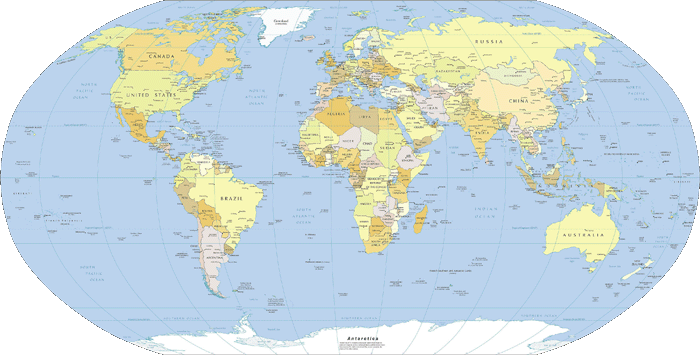
 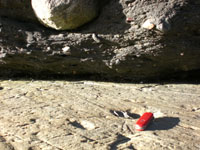 Finnmark Classic Veranger sequences of northern Norway. Diamictites and cap carbonates correlated with the 650Ma Marinoan and 580Ma Gaskiers glaciations   Eastern India Meso-Neoproterozoic carbonates, tuffs and sandstones of the Indravati Basin.  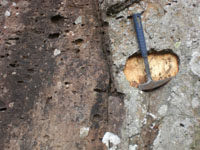 Scotland Classic Port Askaig Formation and volcanics of the SW Highlands, Islay and Shetland, correlated to the 650Ma Marinoan glaciation.   Central Africa Republic Late Neoproterozoic Ndimba carbonates, southern CAR, probably related to the 580Ma Gaskiers glaciation.  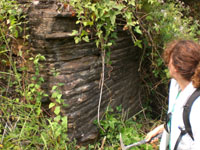 Democratic Republic of Congo Neoproterozoic sandstones, diamictites and cap carbonates correlated with the 750 Sturtian and 650Ma Marinoan glaciations. ...click for more info!   Eastern Greenland Eleanore Bay Supergoup sediments correlated with the 650Ma Marinoan (?) glaciation. Pilot samples, further sampling planned.  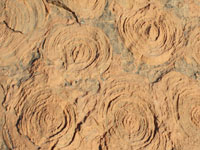 Mauritania Atar Cliffs sediments of the Taoudeni Basin. Diamictites and cap carbonates correlated with the 650Ma Marinoan glaciation. ...click for more info!   Argentina Late Neoproterozoic Puncoviscana Group sediments.   Brazil Diamictites and cap carbonates correlated with the 650Ma Marinoan glaciation.   Quebec Late Neoproterozoic St Honore intrusives.  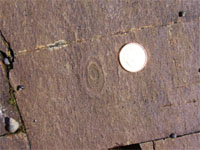 Newfoundland Sediments and volcanics of the Bonavista Peninsula, deposited just after the 585Ma Gaskiers glaciation.   The Mackenzie and Wernicke Mountains, NW Canada Diamictites and cap carbonates relating to the 750Ma Sturtian and 650Ma Marinoan (?) glaciations. Sampling planned for 2009/2010.  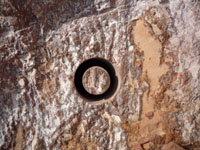 Oman Fiq and Huqf Supergroups of Oman. Diamictites and carbonates of possible Sturtian-Marinoan age. Fieldwork took place April 2009.  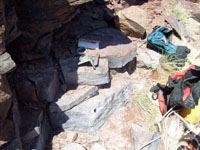 South Africa and Namibia several Meso-Late Neoproterozoic sedimentary sequences in the Kalahari craton and southern Congo craton, including diamictites and cap carbonates correlated with the 650Ma Marinoan and Gaskiers glaciations.   Southern Siberia Neoproterozoic volcanics and sediments, sampling planned for autumn 2008. |